BGES 2025-2026 Civil War Program Schedule
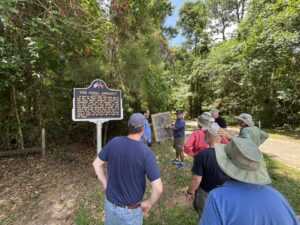 Every battlefield has stories to tell, and Blue & Gray brings those stories to life through expertly guided Civil War tours led by some of the nation’s most respected historians. Whether your interest lies in a specific campaign, a broader theater, or simply deepening your understanding of the war, our lineup of tours offers something for everyone.
Every battlefield has stories to tell, and Blue & Gray brings those stories to life through expertly guided Civil War tours led by some of the nation’s most respected historians. Whether your interest lies in a specific campaign, a broader theater, or simply deepening your understanding of the war, our lineup of tours offers something for everyone.
What sets Blue & Gray apart is access. Thanks to the reputation and relationships of our tour leaders, many of our itineraries include visits to sites rarely open to the public. These exclusive opportunities provide an unparalleled perspective and a richer understanding of the events and people that shaped each battle. Scroll through our upcoming tours and you’ll find a thoughtful, balanced selection spanning all major theaters of the conflict—each designed to illuminate history and tell the stories in a way few others can.
NEW 2026! FIELD UNIVERSITY PROGRAM
BGES’S 2025 FIELD UNIVERSITY PROGRAM
The Stones River Campaign, with Dan Masters, November 20–23, 2025; from Smyrna, TN
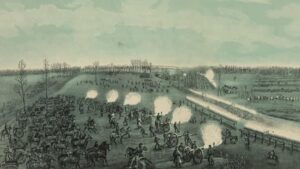 In the busy month of December 1862, as the Union suffered resounding defeats at
In the busy month of December 1862, as the Union suffered resounding defeats at
Fredericksburg, Virginia, and along the steep banks of Vicksburg, Mississippi—including the failed Chickasaw Bayou expedition—newspapers in both the North and South carried headlines that alternately sank and lifted morale. Yet amid these high-profile battles, a less publicized but arguably more significant campaign was unfolding in the heart of the conflict: middle Tennessee.
Tour Details and Registration Information.
BGES’S 2026 FIELD UNIVERSITY PROGRAM
The Wilmington Campaign: “Last Rays of Departing Hope” with Dr. Chris Fonvielle, February 11–15, 2026; from Wilmington, NC
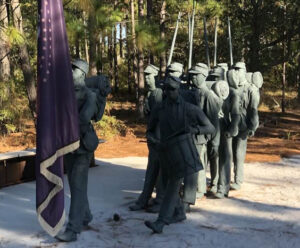 In late 1864, Gen. Robert E. Lee warned North Carolina authorities: “If Wilmington falls, I cannot maintain my army.” The message was abundantly clear. The survival of the Army of Northern Virginia, and thus the Confederacy, depended upon Wilmington’s survival as the last major seaport open to foreign trade.
In late 1864, Gen. Robert E. Lee warned North Carolina authorities: “If Wilmington falls, I cannot maintain my army.” The message was abundantly clear. The survival of the Army of Northern Virginia, and thus the Confederacy, depended upon Wilmington’s survival as the last major seaport open to foreign trade.
For more than three years, Confederate blockade runners had smuggled vital supplies, weapons, equipment, and food through the Union naval cordon off the Cape Fear coast and into Wilmington’s docks. From there, war material moved by rail to the front while civilian goods bolstered the home front.
Tour Details and Registration Information.
Forrest and the Streight Raid: with Norman Dasinger, February 20-22, 2026; from Gadsden, AL
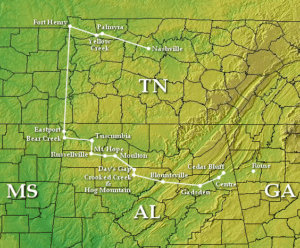 In April 1863, while Union operations in the Western Theater lagged and Confederate raids threatened Federal supply lines, Union Gen. William S. Rosecrans ordered Col. Abel Streight to lead a fast-moving raid into northern Alabama and Georgia to cut the Western & Atlantic Railroad between Chattanooga and Atlanta.
In April 1863, while Union operations in the Western Theater lagged and Confederate raids threatened Federal supply lines, Union Gen. William S. Rosecrans ordered Col. Abel Streight to lead a fast-moving raid into northern Alabama and Georgia to cut the Western & Atlantic Railroad between Chattanooga and Atlanta.
Streight’s column would move east from northeast Mississippi while Brig. Gen. Grenville Dodge struck Tuscumbia, Alabama, as a diversion. More than 2,000 mounted Union troopers—many on mules, which Streight believed were better suited to Appalachian terrain—pushed across northern Alabama toward Georgia.
Tour Details and Registration Information.
Sherman’s Spring 1865 North Carolina Campaign with Wade Sokolosky, March 26–29, 2026; from Smithfield, NC
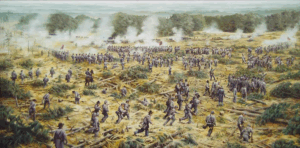 Civil War events in Virginia have long overshadowed Maj. Gen. William Tecumseh Sherman’s 1865 push through the Carolinas. After his largely unopposed March to the Sea culminated in December 1864 with the capture of Savannah, Georgia, Sherman turned north to unite with Federal forces in Virginia and crush Robert E. Lee. Resistance in the Carolinas, however, was not yet at an end.
Civil War events in Virginia have long overshadowed Maj. Gen. William Tecumseh Sherman’s 1865 push through the Carolinas. After his largely unopposed March to the Sea culminated in December 1864 with the capture of Savannah, Georgia, Sherman turned north to unite with Federal forces in Virginia and crush Robert E. Lee. Resistance in the Carolinas, however, was not yet at an end.
Tour Details and Registration Information.
The Atlanta Campaign, Part 2 – New Hope to Kennesaw Mountain with David (Dave) A. Powell, April 15-19, 2026; from Kennesaw, GA
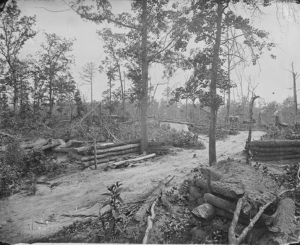
William T. Sherman called Georgia’s Etowah River his “Rubicon”—a decisive line whose crossing marked his intent to take the war to Gen. Joseph Johnston’s Army of Tennessee and press on to Atlanta.
Since the Federal army’s main supply line, the Western & Atlantic Railroad, ran through the formidable Allatoona Pass, Sherman chose not to assault that fortress directly. Instead, he temporarily cut loose from the railroad and marched overland through the rough country south of the Etowah toward Dallas and, ultimately, Marietta.
Tour Details and Registration Information.
The Siege of Suffolk, April 11–May 4, 1863 with Brian Steel Wills, April 23–26, 2026; from Suffolk, VA
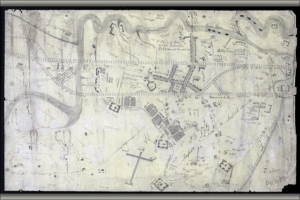 James Longstreet’s 1863 Suffolk Campaign uncovered the serious logistical challenges the Army of Northern Virginia experienced in 1863 and the desperate attempt to resolve them. The absence of his combat-tested veterans under John Bell Hood and George Pickett at Suffolk forced Gen. Robert E. Lee to improvise at Chancellorsville but proved essential to the ability of the army to operate actively in the following Gettysburg Campaign.
James Longstreet’s 1863 Suffolk Campaign uncovered the serious logistical challenges the Army of Northern Virginia experienced in 1863 and the desperate attempt to resolve them. The absence of his combat-tested veterans under John Bell Hood and George Pickett at Suffolk forced Gen. Robert E. Lee to improvise at Chancellorsville but proved essential to the ability of the army to operate actively in the following Gettysburg Campaign.
Tour Details and Registration Information.
Petersburg to Appomattox: From the Trenches to Surrender with Phillip S. Greenwalt May 6–10, 2026; from Chester, VA
 The Siege of Petersburg, considered the longest in American military history, lasted for 292 days, from June 1864 to early April 1865. The combined Federal armies under Gen. Ulysses S. Grant gradually wore down the Army of Northern Virginia under Gen. Robert E. Lee.
The Siege of Petersburg, considered the longest in American military history, lasted for 292 days, from June 1864 to early April 1865. The combined Federal armies under Gen. Ulysses S. Grant gradually wore down the Army of Northern Virginia under Gen. Robert E. Lee.
Tour Details and Registration Information.
The Wilderness Campaign with Greg Mertz May 13-17, 2026, from Fredericksburg, VA
 Three years into the Civil War, the premier generals produced by each of the respective armies finally faced each other in battle during the May 5-6, 1864, Battle of the Wilderness. But even more than the long awaited matchup of the two heavyweights slugging it out for two days, the Wilderness Campaign was the start of a new style of fighing. The battle initiated a long, gruelling campaign during which the men in the ranks would be incessantly marching, fighting, digging trenches and sniping at each other round the clock for weeks on end, with little opportunity for meaningful rest.
Three years into the Civil War, the premier generals produced by each of the respective armies finally faced each other in battle during the May 5-6, 1864, Battle of the Wilderness. But even more than the long awaited matchup of the two heavyweights slugging it out for two days, the Wilderness Campaign was the start of a new style of fighing. The battle initiated a long, gruelling campaign during which the men in the ranks would be incessantly marching, fighting, digging trenches and sniping at each other round the clock for weeks on end, with little opportunity for meaningful rest.
Tour Details and Registration Information.
Blue and Gray Education Society (“BGES”) Return Policy for Cancelations
BGES is a non-profit, educational organization. All registrations are open-ended and may be refunded if circumstances require the customer to cancel. Our normal policy is to give a 100% refund of the registration fee for cancellations made before the event, except for any non-refundable vendor costs that are incurred, if any. All refunds are determined and approved by the Executive Director of the BGES. In the event of a tour cancellation by BGES, BGES is not responsible for associated travel costs incurred by a tour member, including but not limited to hotel lodging, airfare, or other transportation costs.
